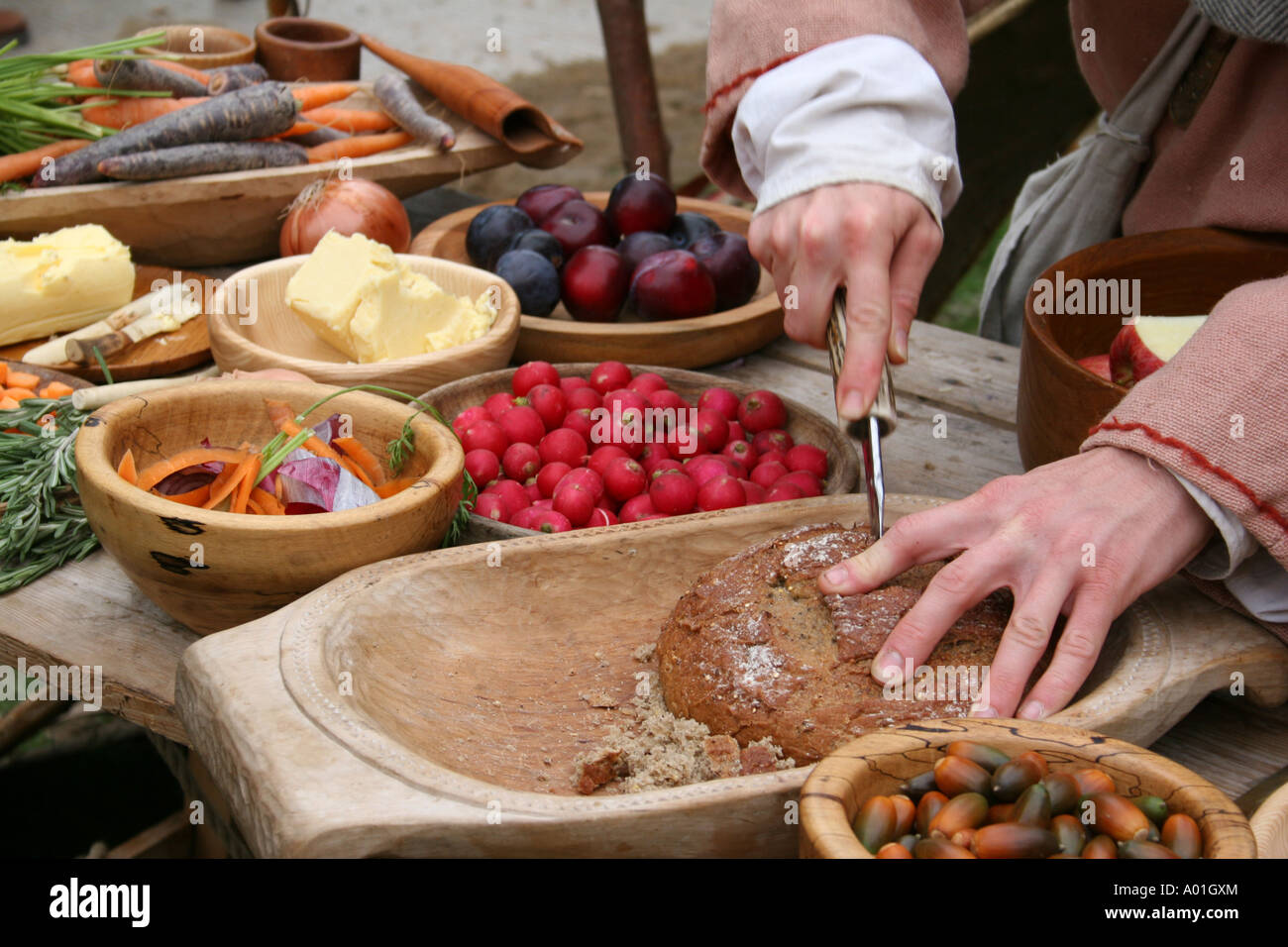
One strong beer was called godale, from the German meaning ‘good beer’. The people of the middle ages drank ale, beer, mead or cider as well as different types of wine. Venison was reserved for kings and the rich. Also eaten were peacocks, hedgehogs and squirrels. Game birds such as the heron, crane and crow were considered delicacies. Geese were so highly prized that flocks of them were driven to feed in the fields like a flock of sheep. Unscrupulous butchers would attach the tail of a kid to a lamb in order to deceive the customer into paying a high price for a less expensive meat. Such ulcers were believed to be a sign their flesh would communicate leprosy to those who ate it. Prior to food preparation the underside of the pig’s tongue was inspected for white ulcers. Pork was the most common meat served at great tables in the form of hams, sausages and black pudding. In this the lower classes had an advantage, their tables being only a few steps from the fire on which the meal was cooked. As the kitchen in manor houses and castles might be situated at some distance from the Great Hall, food was often served cold. Everyone had their own knife and soups were drunk from a cup. The upper classes ate fine white bread, the lower classes coarse rye and barley breads.


Nobles and royals ate their food from silverware and golden dishes while the lower classes used wood or horn dishes. What was eaten and how it was served varied considerably depending on social station. The staple diet of medieval man was bread, meat and fish.


 0 kommentar(er)
0 kommentar(er)
